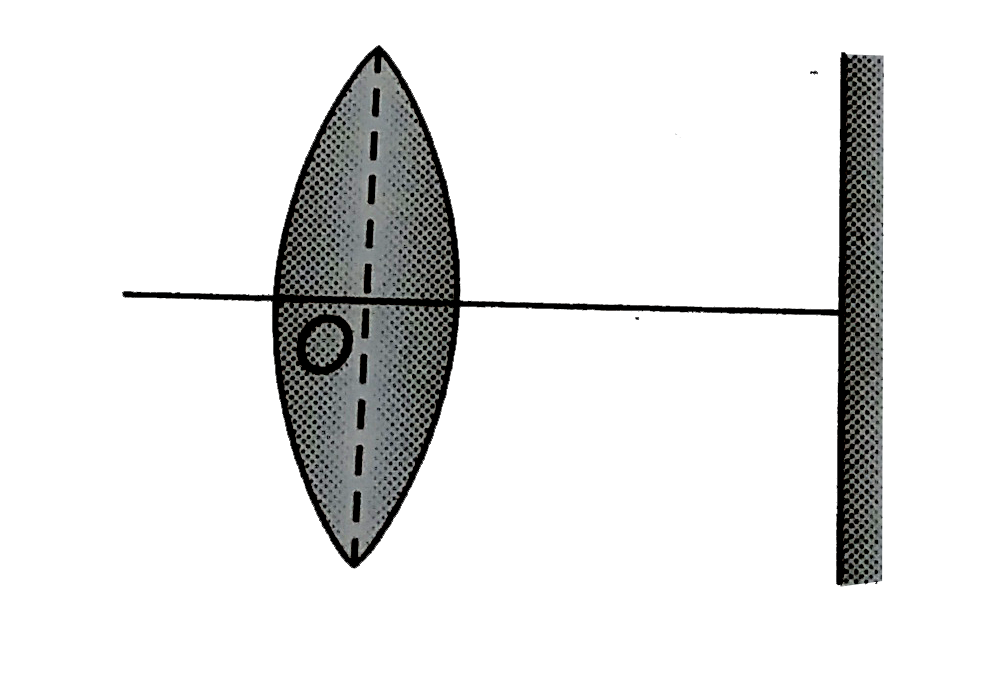The distance between an object and its upright image is 20cm. if the magnification is 0.5, what is the focal length of the lens that is being used to form the image?
The correct Answer is:C, D
To find the focal length of the lens used to form an upright image, we can follow these steps:
Step 1: Understand the relationship between object distance (u), image distance (v), and magnification (m).
Given:
- Magnification (m) = 0.5
- The distance between the object and the image = 20 cm
Step 2: Set up the equations based on the information provided.
Since the image is upright and diminished, we can conclude that the lens is a concave lens. For a concave lens, the magnification is given by:
m=h′h=−vu
Where:
- h′ is the height of the image,
- h is the height of the object,
- v is the image distance,
- u is the object distance.
From the magnification, we have:
0.5=−vu
This implies:
v=−0.5u
Step 3: Use the distance between the object and image.
The distance between the object and its image is given by:
|u|−|v|=20 cm
Substituting v from the magnification equation:
|u|−|−0.5u|=20
This simplifies to:
u−0.5u=20
0.5u=20
Thus:
u=40 cm
Step 4: Calculate the image distance (v).
Using the relationship v=−0.5u:
v=−0.5×40=−20 cm
Step 5: Use the lens formula to find the focal length (f).
The lens formula is given by:
1f=1v+1u
Substituting the values of u and v:
1f=1−20+1−40
Calculating this gives:
1f=−120−140
Finding a common denominator (which is 40):
1f=−240−140=−340
Thus:
f=−403 cm≈−13.33 cm
Step 6: Conclusion
The focal length of the lens is approximately:
f≈−13.33 cm
---
Given:
- Magnification (m) = 0.5
- The distance between the object and the image = 20 cm
Since the image is upright and diminished, we can conclude that the lens is a concave lens. For a concave lens, the magnification is given by:
m=h′h=−vu
Where:
- h′ is the height of the image,
- h is the height of the object,
- v is the image distance,
- u is the object distance.
0.5=−vu
This implies:
v=−0.5u
The distance between the object and its image is given by:
|u|−|v|=20 cm
|u|−|−0.5u|=20
This simplifies to:
u−0.5u=20
0.5u=20
Thus:
u=40 cm
Using the relationship v=−0.5u:
v=−0.5×40=−20 cm
The lens formula is given by:
1f=1v+1u
Substituting the values of u and v:
1f=1−20+1−40
Calculating this gives:
1f=−120−140
Finding a common denominator (which is 40):
1f=−240−140=−340
Thus:
f=−403 cm≈−13.33 cm
The focal length of the lens is approximately:
f≈−13.33 cm
Topper's Solved these Questions
- BOOK - DC PANDEY ENGLISHCHAPTER - REFRACTION OF LIGHTEXERCISE - Exercise 31.72videos
REFRACTION OF LIGHT
- BOOK - DC PANDEY ENGLISHCHAPTER - REFRACTION OF LIGHTEXERCISE - Exercise 31.88videos
REFRACTION OF LIGHT
- BOOK - DC PANDEY ENGLISHCHAPTER - REFRACTION OF LIGHTEXERCISE - Exercise 31.55videos
REFRACTION OF LIGHT
- BOOK - DC PANDEY ENGLISHCHAPTER - REFLECTION OF LIGHTEXERCISE - Subjective9videos
REFLECTION OF LIGHT
- BOOK - DC PANDEY ENGLISHCHAPTER - SEMICONDUCTORSEXERCISE - Subjective12videos
SEMICONDUCTORS
Similar Questions
A cocave lens forms the image of an object such that the distance between the object and image is 10 cm and the magnification produced is 1/4. the focal length of the lens will be
View Solution
The distance between a convex lens and a plane mirror is 10 cm. The parallel rays incident on the convex lens after reflection from the mirror forms image at the optical centre of the lens. Focal length of lens will beView Solution
Knowledge Check
- Question 1 - Select One
A concave lens forms the image of an object such that the distance between the object and image is 10cm and the magnification produced is 1/4. The focal length of the lens will be
A−6.2cmB−4.4cmC−8.6cmD−10cm
The minimum distance between an object and its real image formed by a convex lens is
View SolutionThe distance between the object and its real image from the convex lens is 60 cm and the height of image is two times the height of object . The focal length of the lens is
View SolutionIf the distances of an object and its virtual image from the focus of a convex lens of focal length f are 1 cm each, then f is
View SolutionIf the distances of an object and its virtual image from the focus of a convex lens of focal length f are 1 cm each, then f is
View SolutionThe minimum distance between a real object and its real image formed by a thin converging lens of focal length f is
View SolutionIn a displacement method the distance between the object and the screen is 70 cm and the focal length of the lens is 16 cm, find the separations of the magnified and diminished image position of the lens.
View SolutionAn object is placed at a distance u from an equiconvex lens such that the distannce between the object and its real image is minimum. The focal length of the lens is f. The value of u is
View Solution

